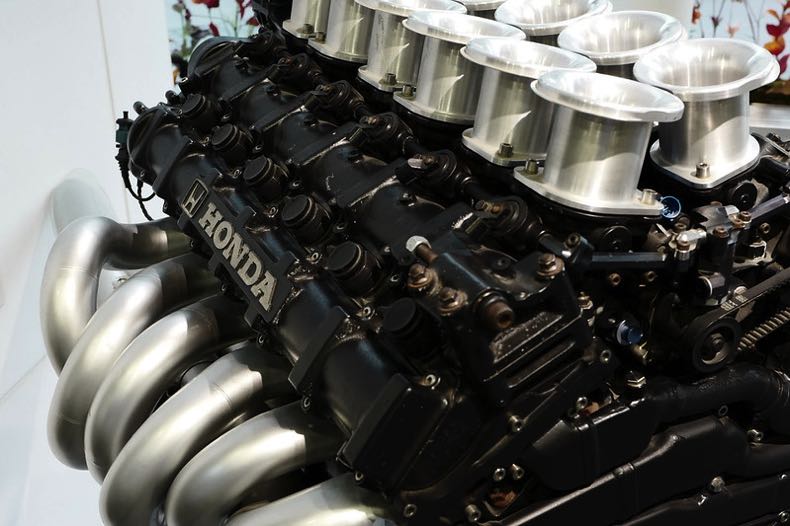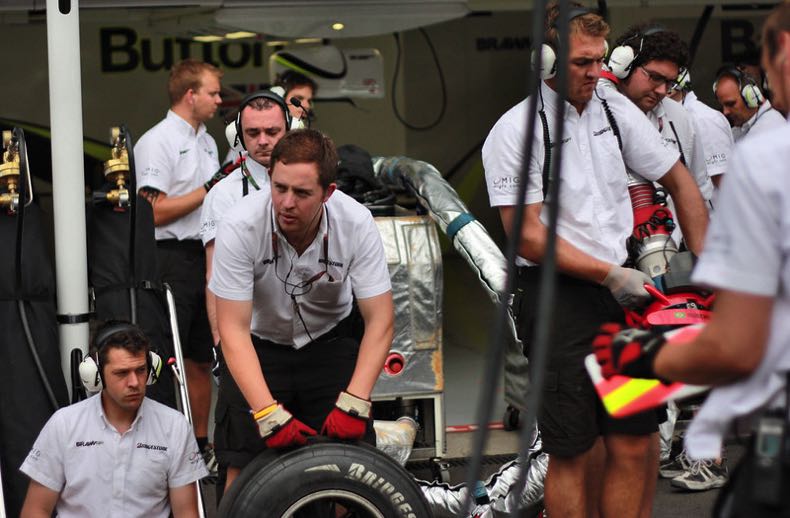 It goes without saying that Formula One cars have to go through a lot of fuel. Much like aviation, motorsport has faced much criticism for the amount of fuel used over the years. Another thing it has in common with aviation, however, is innovation and that fuel type and consumption has changed over time. Formula One has developed an ERS, or Energy Recovery System. That hybrid technology is responsible for the level of economy F1 cars now have.
It goes without saying that Formula One cars have to go through a lot of fuel. Much like aviation, motorsport has faced much criticism for the amount of fuel used over the years. Another thing it has in common with aviation, however, is innovation and that fuel type and consumption has changed over time. Formula One has developed an ERS, or Energy Recovery System. That hybrid technology is responsible for the level of economy F1 cars now have.
Essentially, F1 cars use petrol. This is not the same petrol as your road car, however. New blends are constantly being created to help provide power, performance and efficiency for F1 power units, especially considering how fast they can go.
How Much Fuel Is Used?

In 2014, Formula One introduced hybrid power units. Then, regulations meant that from the start to the end of a race, a maximum fuel usage of 100kg was allowed. When the engines were V8 units, they used one third more than that. While, overall, the sport is going greener, changes to the cars themselves have led to that usage figure going up. The maximum allowed moved to 105kg to allow for the heavier tyres and extra safety equipment required, then to 110kg after driver feedback.
Even now though, despite 110kg being allowed it doesn’t mean that an F1 team will decide to use that much. During many F1 weekends, teams adopt a short-fuel practice. This means putting in as little as 5kg to 15kg in order to reap the benefits of quicker lap times and less tyre wear. This, of course, has to be done as part of an overall qualifying and pit-stop strategy.
F1 Fuel ‘Tanks’
When listening to F1 commentary, you’ll still hear all about fuel tanks. The word tank is just ingrained in our psyche when it comes to cars and their fuel. In truth however, Formula 1 cars actually have more of a fuel ‘sack’. This is sometimes called a ‘bladder’. Fuel sacks have to be in a specific place within the car. The technology is outstanding.
F1 cars are well known for their speed, aerodynamics and cornering ability. These are things that would be curtailed with a big old fuel tank, similar to the ones on your own car at home. The fuel would simply keep splashing from side to side as the car turned which does an F1 car no good at all. Inside the tank in this case are a series of baffles. These baffles have one-way valves fitted to them meaning that the fuel in the car can be compartmentalised. F1 cars because of this can remain very stable.
How Is the Fuel Measured?

When we talk about fuel in domestic cars, we mention litres or gallons. In F1, the fuel is of course measured and priced in litres when it is being delivered. This helps not only the value, but also means teams and suppliers don’t have to account for the volume of fuel changing according to the outside temperature.
F1 fuel is essentially measured in kilos, not litres. Cooler fuel is denser. The opposite is true of warmer fuel. It’s not about litres on race weekend, it’s about weight. The more weight is in a car, the slower it can go. This is why you will hear F1 teams talk about how many kg’s of fuel they are putting in.
Fuel Science & Upgrades
Formula One engines indeed do run on petrol. Currently, and for a number of years now, the petrol used is designed according to the sport’s regulations to be not too dissimilar to the fuel used in normal road cars. To remain competitive, teams must find fuel which is formulated from compounds that can be found in ordinary commercial fuel. There are strict rules regarding impurities in the fuel.
With in the rules teams can work on their fuel to try and make it not just more efficient, but have it provide more power to the car.
Fuels also come in different grades. As the cars change, so must the fuel. A fuel may need to match the characteristics and technical specifications of a new engine upgrade.
What many don’t know is that, without the need to eke an extra 100th of a second from an F1 car, it would essentially drive perfectly well on the same fuel sold at a typical petrol garage forecourt. F1 simply tweaks everything, including fuel, to better service the demands of its ever-powerful engines.
To simplify what F1 teams do, imagine indeed driving onto that forecourt. The three or four fuels available on those pumps can power every single type of road vehicle which may turn up. Formula One teams on the other hand have to formulate and engineer their fuel to work with a very specific type of engine. The big issue now is how they adapt to a greener, ever-changing future.
How Does F1 Plan to Adapt to Climate Change?

Climate change is a huge worldwide issue right now an F1 knows it. In fairness, motorsport and aviation are continuing to adapt and so it is a lazy view to believe that we should feel guilty about partaking in either. Formula 1 has a commitment to being carbon neutral by 2030. Before that, 2026 is the magic year by which new rule changes will come into effect in the sport meaning engines and fuels are more sustainable.
The likes of Ford and Audi are getting involved in Formula 1 based partly on the changes in fuel regulations and sustainability. They no longer feel that being part of F1 would damage their worldwide reputation. Other car manufacturers may even try to follow suit. Imagine a Kia F1 car? It’s not beyond comprehension.
The 2026 rule changes are designed to make F1 more sustainable given the heavy focus worldwide on climate change and its undoubted effects. The new rules look to make the following possible:
- Three times the electric power being used. Electrical components in current engines produce 120kW of energy. This is to be increased to 350kW by 2026.
- No carbon from fossils. No new carbon produced by fossil fuels will be released into the world’s atmosphere.
- Engines will be cheaper to produce. A cost cap on engines will be inflicted by the new regulations. This means car producers will need to find new solutions in order to power F1 cars.
- Less fuel being used. By 2026, the sport is attempting to get every car to use only 70kg of fuel during a race. This compares with the 100kg now used.
What Materials Will Be Used?
It seems that a blend of alcohol and other complex ingredients can make up the fuel of the future. These may be made by the manufacturers.
Ethanol is on the list and it’s cheap to use. Around 20% of the fuel used in the future will be made up of one of the oxygen-based fuels, such as ethanol.
What F1 teams need to understand is where they will get the carbon from that they need. It’s already known that it can be extracted from algae and from waste which is very innovative indeed. Quite literally then, we could see the F1 cars of the near future using waste materials, algae and alcohol to power them. Whatever happens, it will be hugely interesting to see if the teams can achieve their goals in time.
